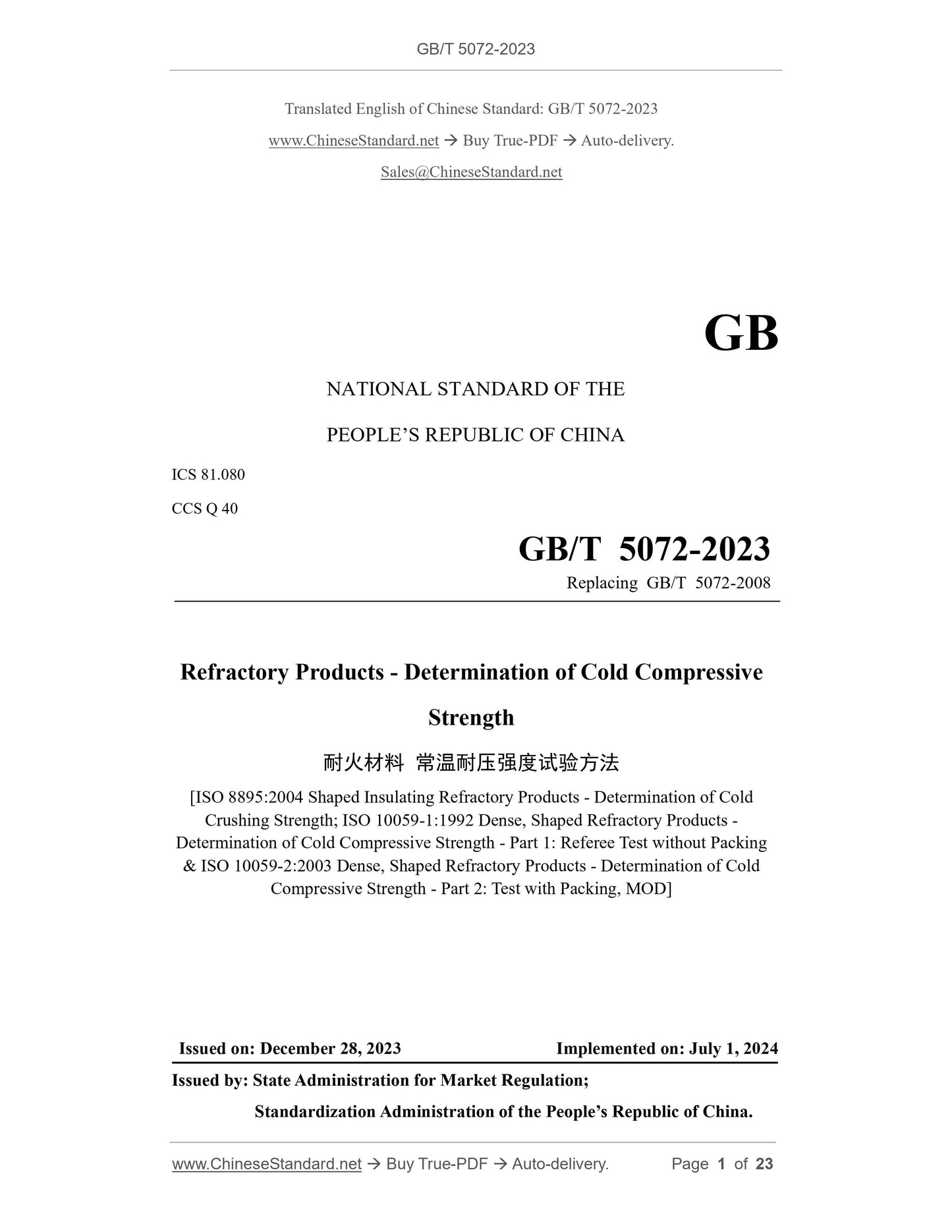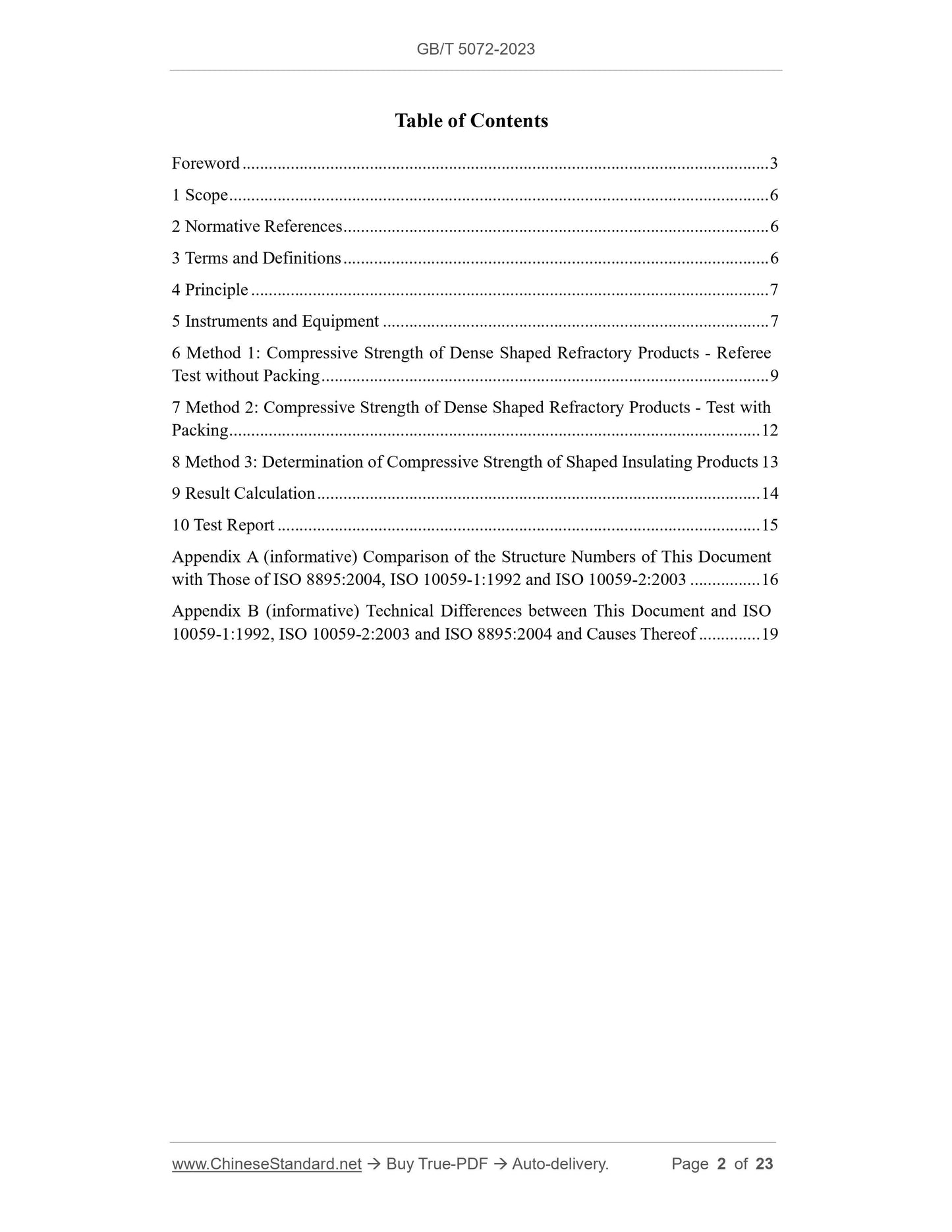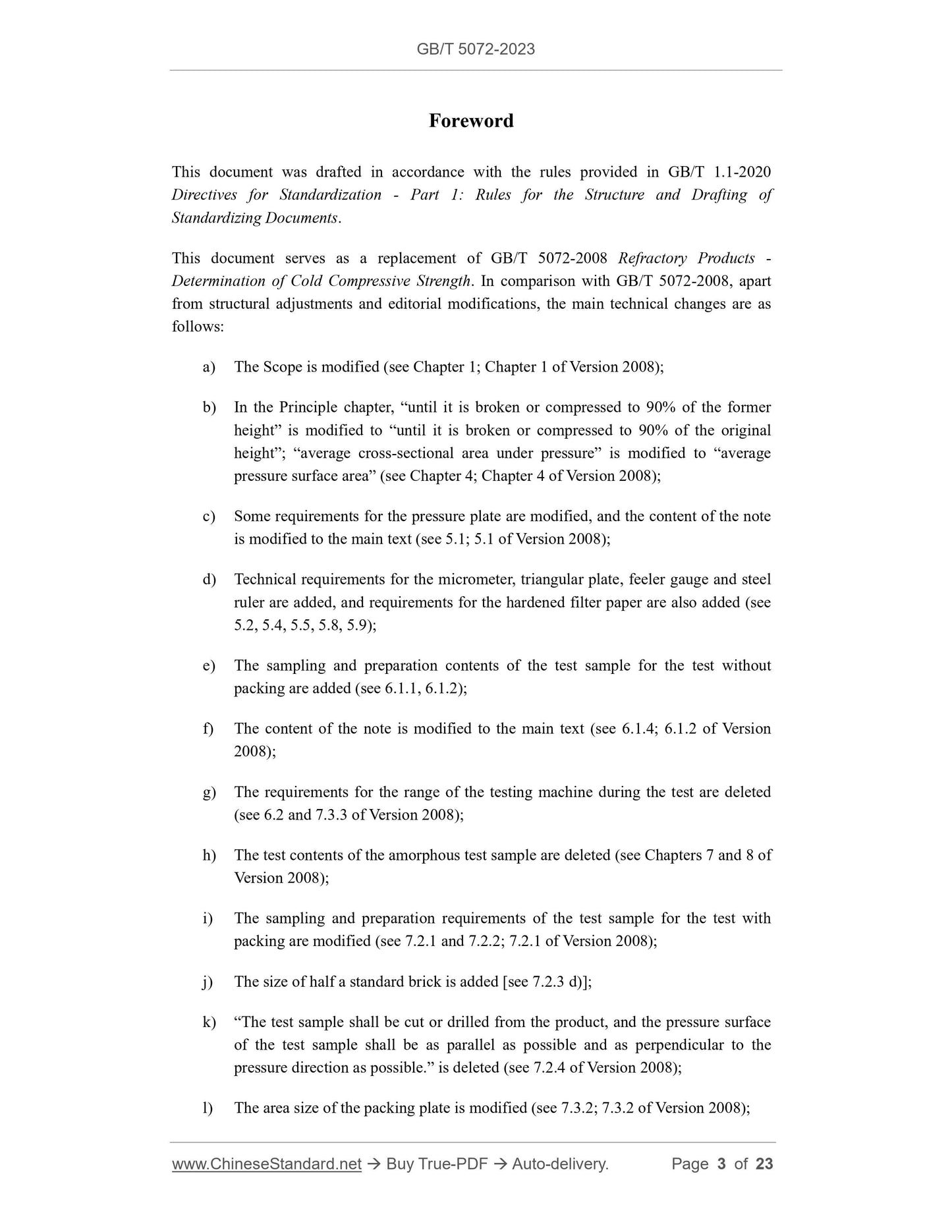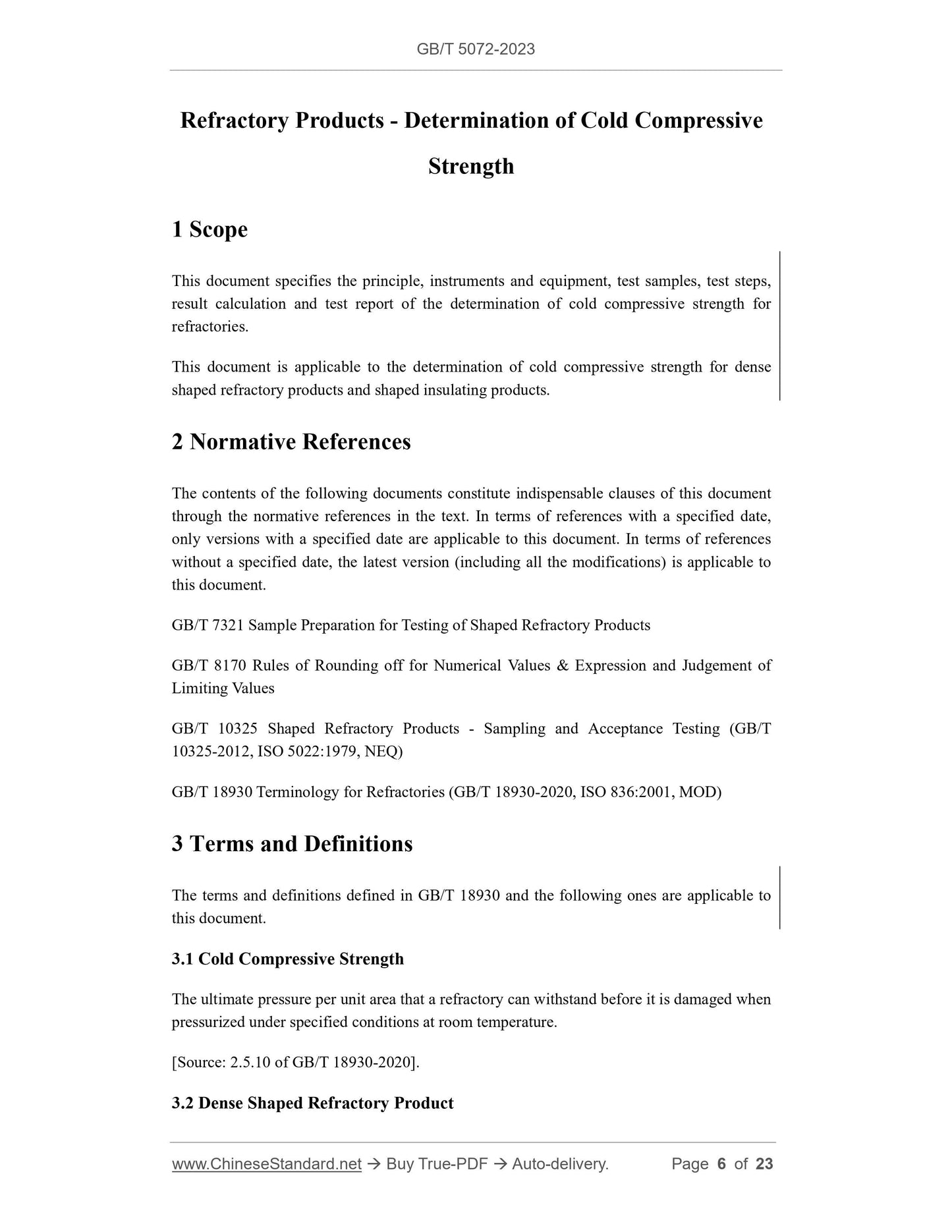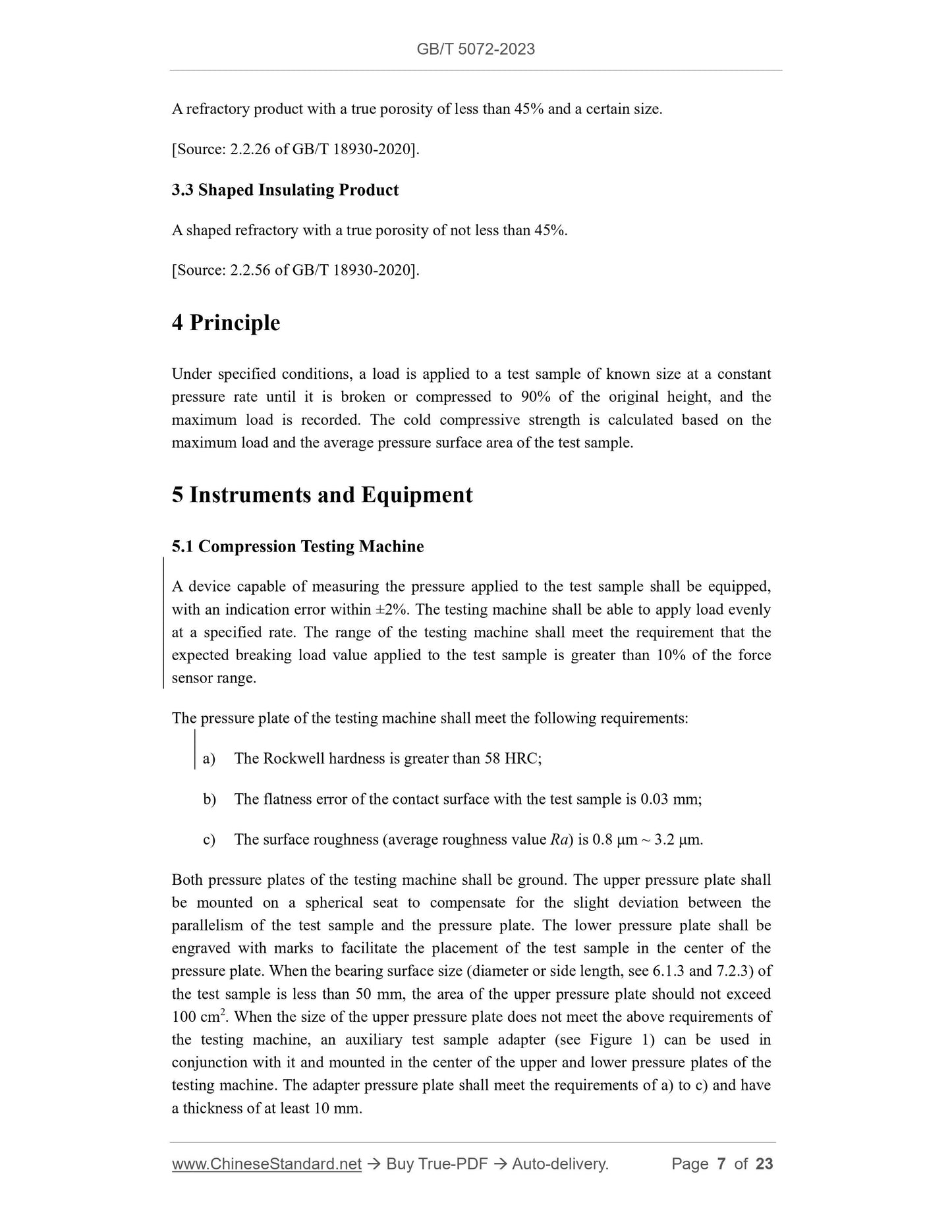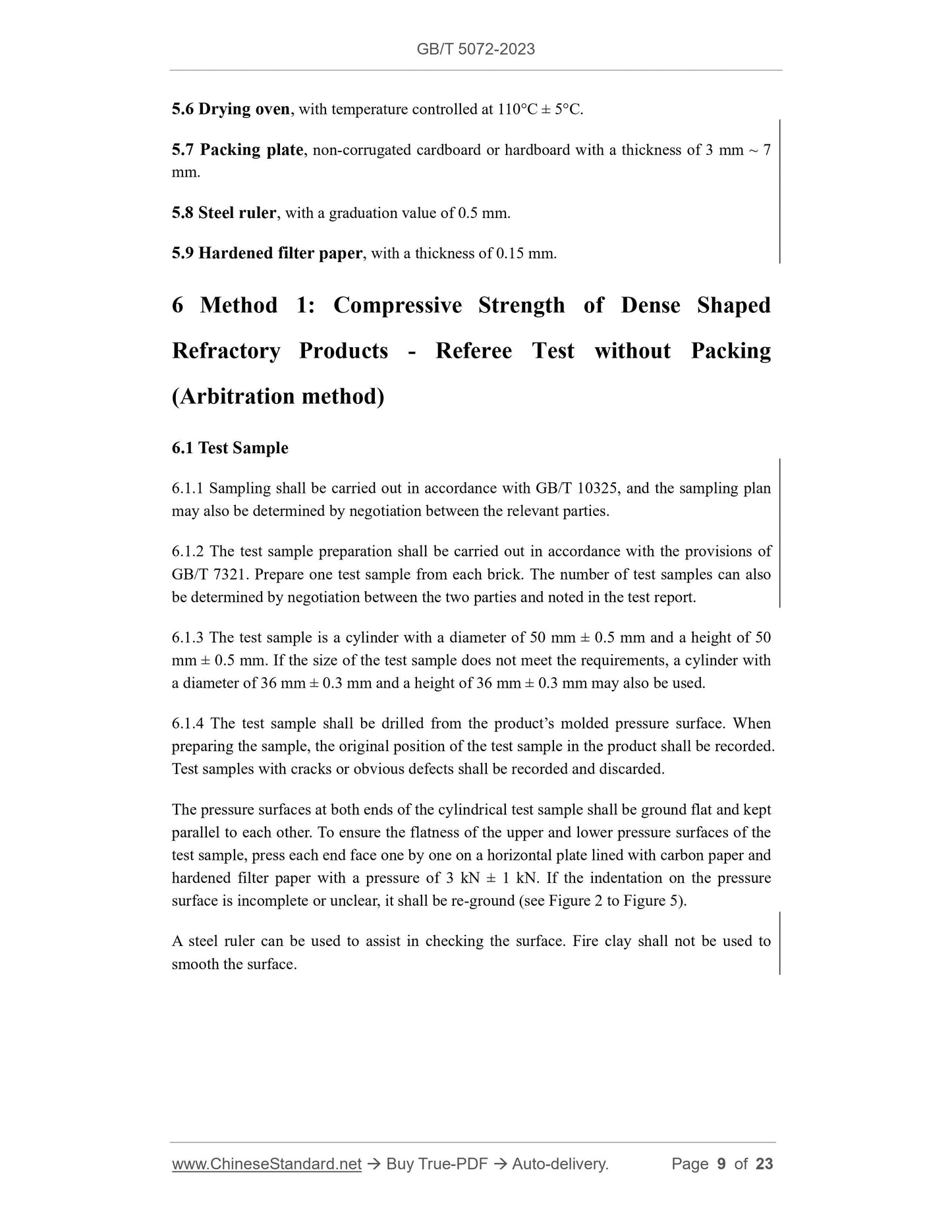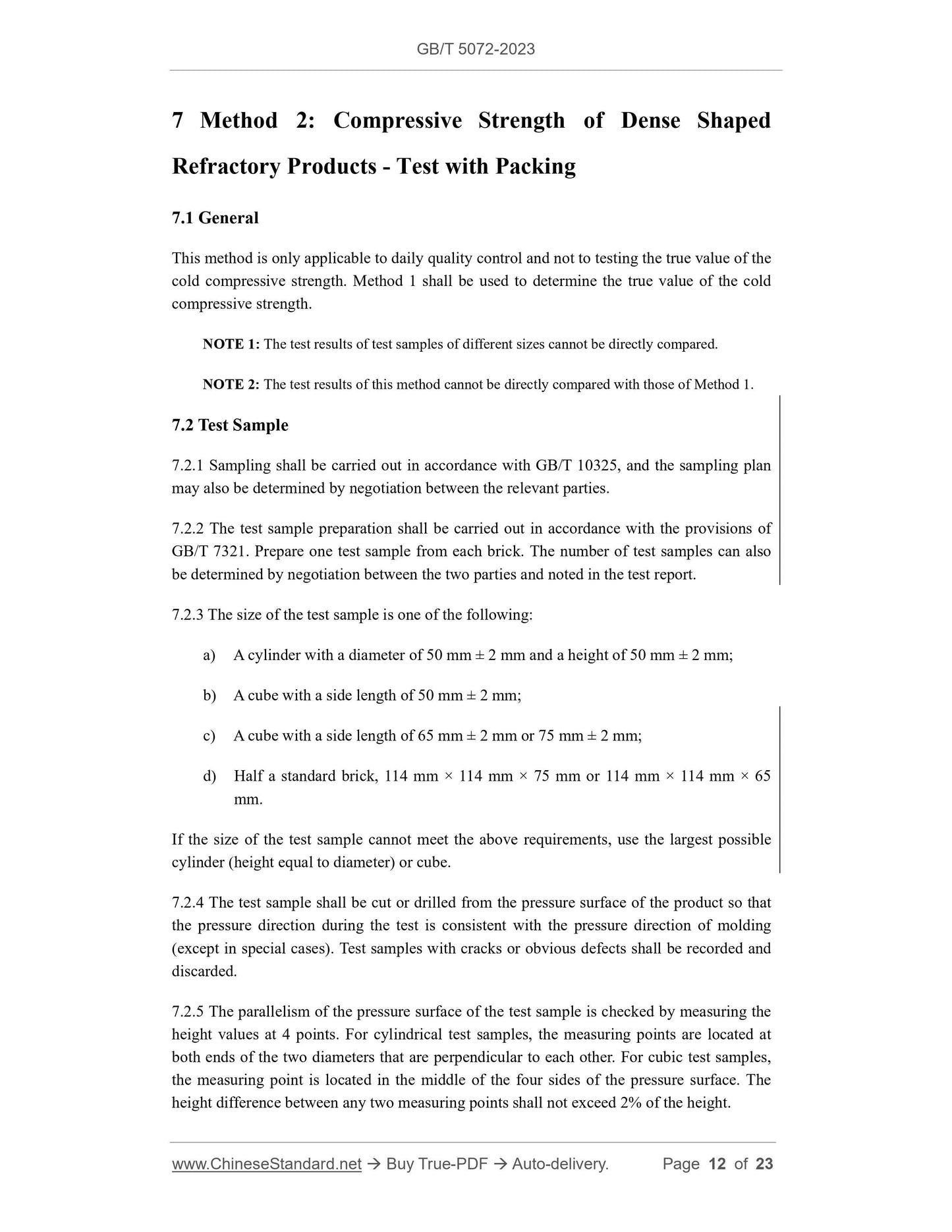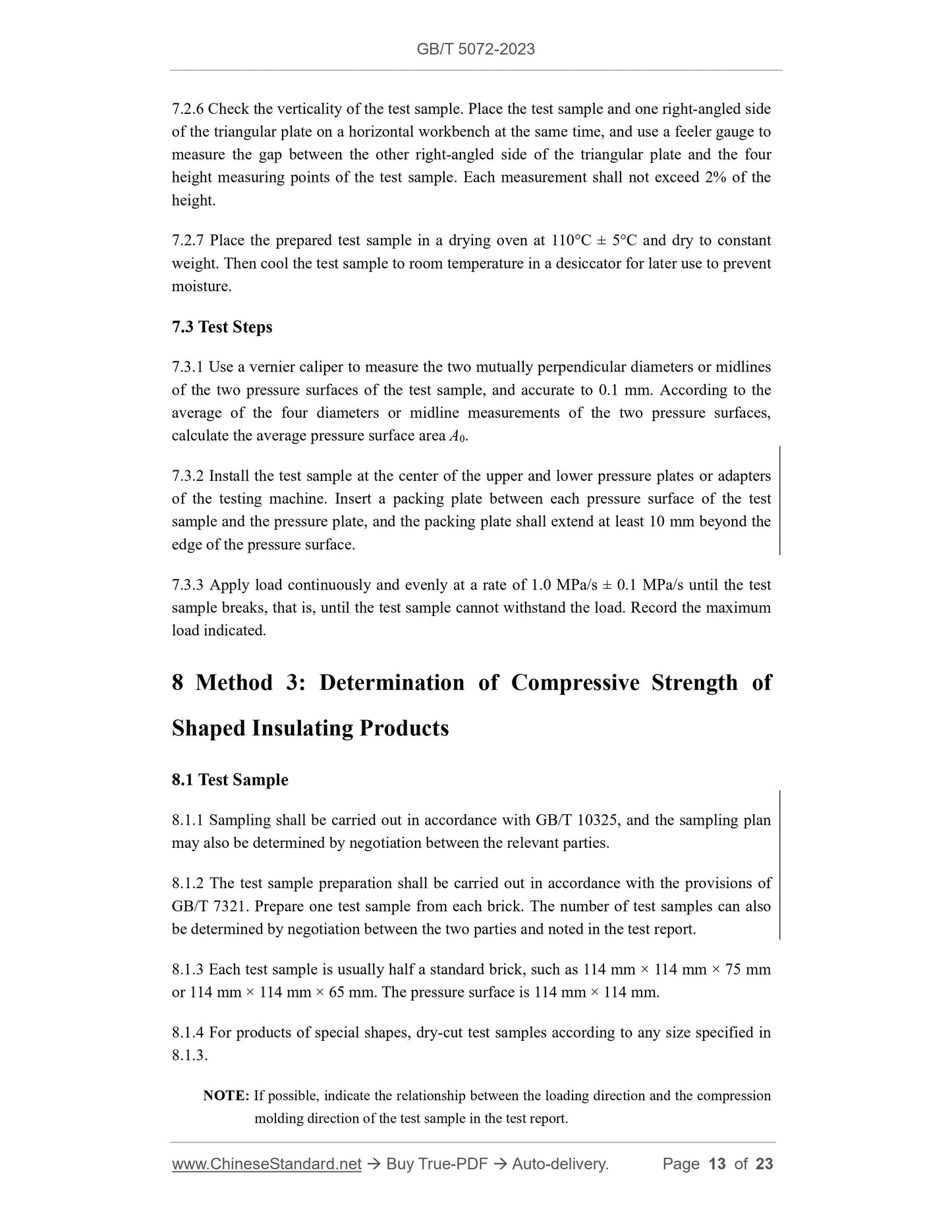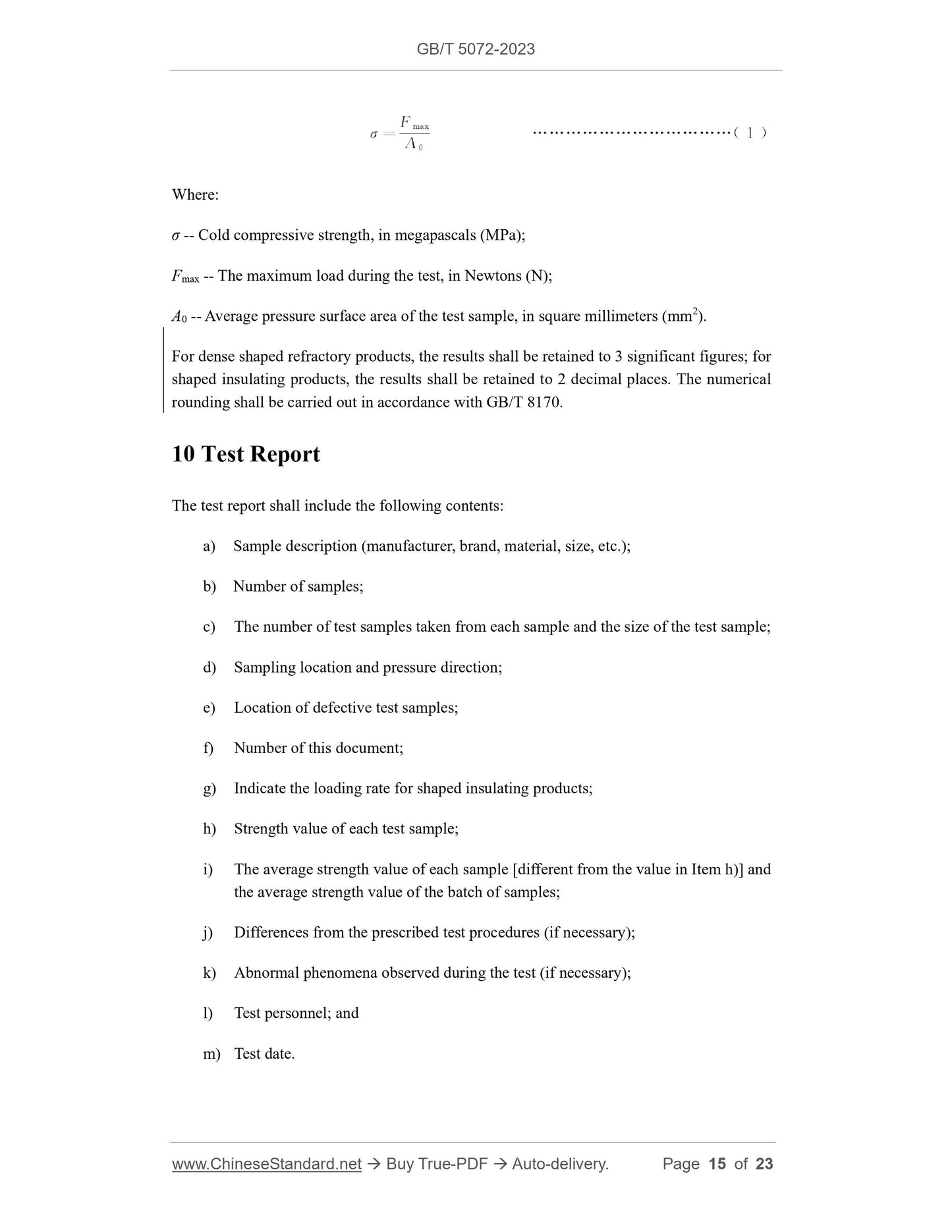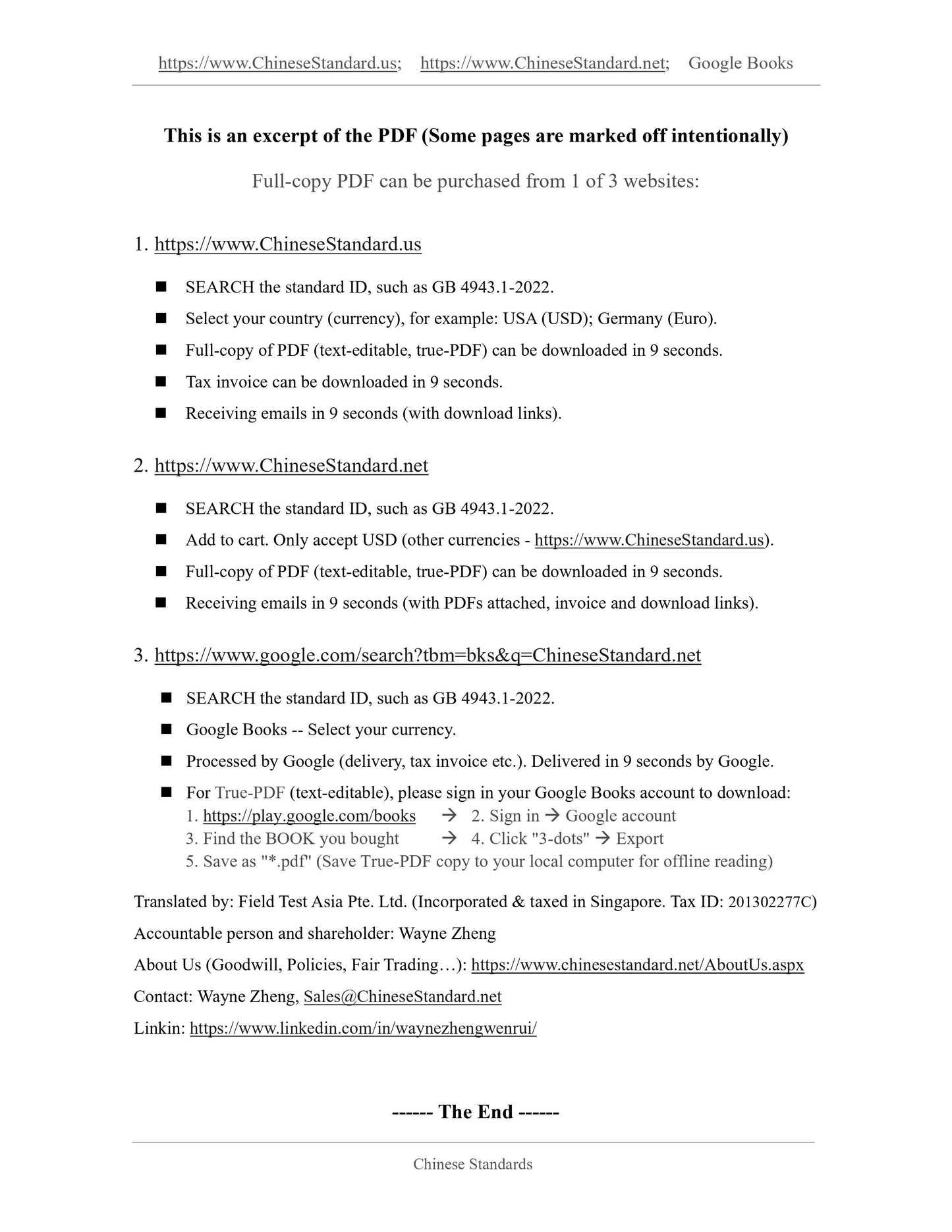1
/
of
10
www.ChineseStandard.us -- Field Test Asia Pte. Ltd.
GB/T 5072-2023 English PDF (GB/T5072-2023)
GB/T 5072-2023 English PDF (GB/T5072-2023)
Regular price
$265.00
Regular price
Sale price
$265.00
Unit price
/
per
Shipping calculated at checkout.
Couldn't load pickup availability
GB/T 5072-2023: Refractory products - Determination of cold compressive strength
Delivery: 9 seconds. Download (and Email) true-PDF + Invoice.Get Quotation: Click GB/T 5072-2023 (Self-service in 1-minute)
Newer / historical versions: GB/T 5072-2023
Preview True-PDF
Scope
This document specifies the principle, instruments and equipment, test samples, test steps,result calculation and test report of the determination of cold compressive strength for
refractories.
Basic Data
| Standard ID | GB/T 5072-2023 (GB/T5072-2023) |
| Description (Translated English) | Refractory products - Determination of cold compressive strength |
| Sector / Industry | National Standard (Recommended) |
| Classification of Chinese Standard | Q40 |
| Classification of International Standard | 81.080 |
| Word Count Estimation | 18,147 |
| Date of Issue | 2023-12-28 |
| Date of Implementation | 2024-07-01 |
| Older Standard (superseded by this standard) | GB/T 5072-2008 |
| Issuing agency(ies) | State Administration for Market Regulation, China National Standardization Administration |
Share
